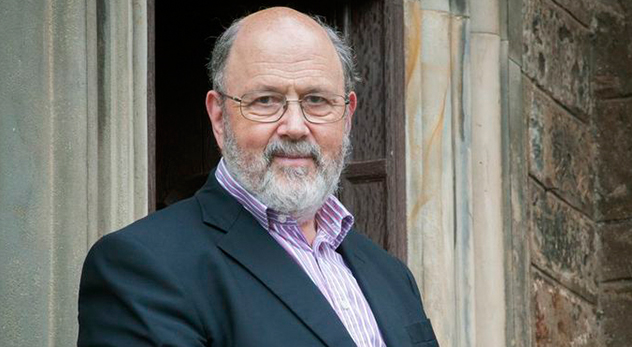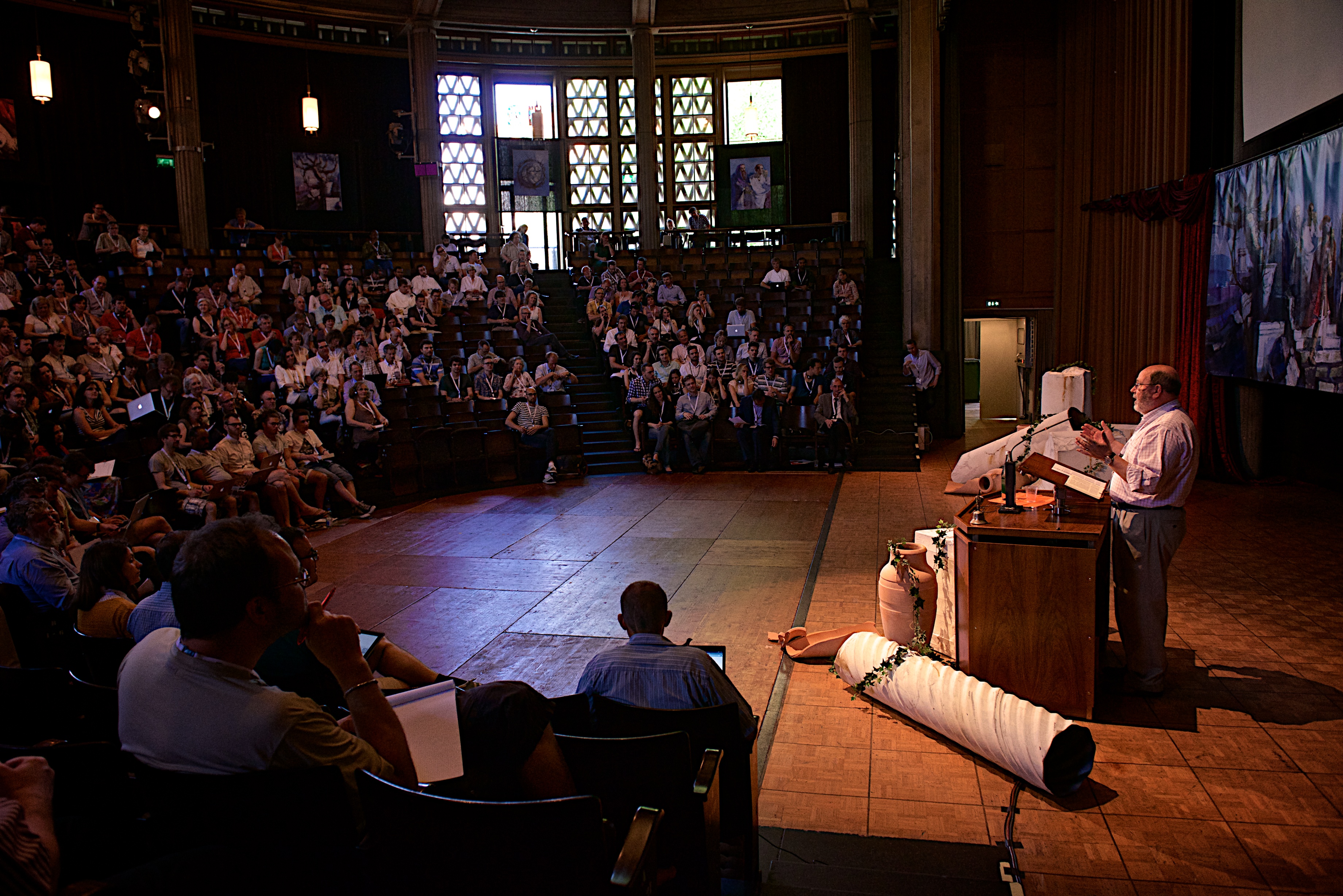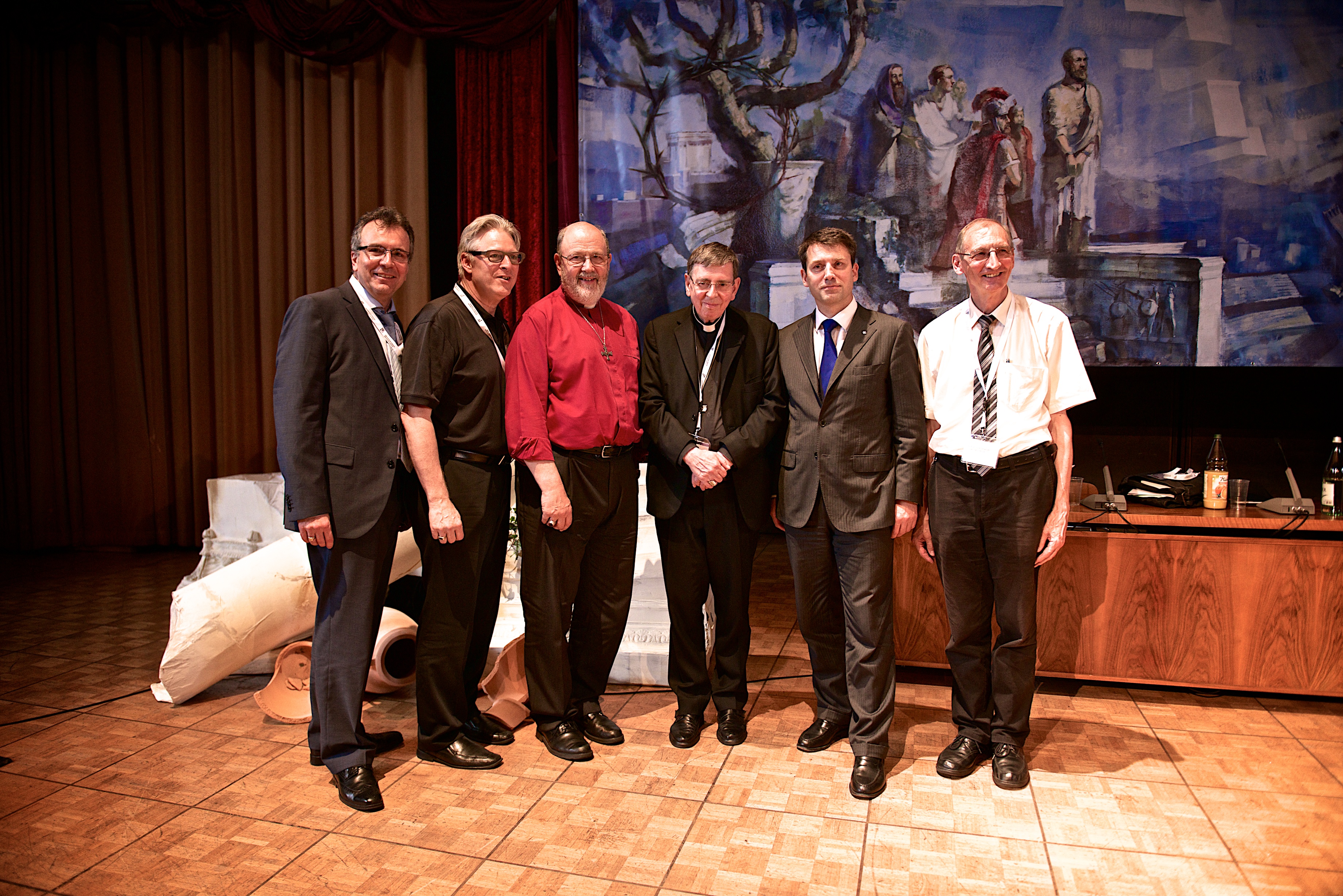Paul in History & Theology
A Jewish thinker invents Christian Theology. N.T. Wright presents his monumental opus on Paul to a large audience in Fribourg
First Conference in Fribourg, Switzerland 10th -13th june 2014
The largest auditorium of the university is filled to capacity : 400-500 Christians are listening to N.T. Wright’s biblical exegesis. A former Anglican Bishop of Durham, and Professor of Theology in Oxford and St. Andrews, Wright has long been esteemed as a leading New Testament exegete in the English-speaking world. He has also penned a number of highly successful, theological books. A household name in the English-speaking Christian world, he is also becoming more and more known in Switzerland. It is no coincidence that some of his best-selling books (eg. Surprised by Hope) are reminiscent of C.S. Lewis’ works. Even his more weighty, academic works, are gripping and highly enjoyable. They testify to Wright’s astounding literary scholarship and familiarity with early Jewish and Hellenic sources, along with his awareness for methodological issues. Moreover, they showcase a strength often associated with Anglo-Saxon historiography: the ability to paint the large picture and to synthesize large amounts of data into a coherent whole.

The lecturer
A former Anglican bishop (of Durham), before and after professor of theology (in Oxford and St. Andrews) and one who has long been regarded as one of the leading exegetes in the Anglophone world, but who also writes bestsellers that are in every bookstore there - even "secular" ones. His name is Nicholas Thomas (Tom) Wright, a name that is now gradually no longer only known to connoisseurs in the German-speaking world. It is certainly no coincidence that some of his bestsellers in the title are reminiscent of another highly successful Christian writer of the 20th century, C.S. Lewis ("Suprised by Joy"). In addition, there are academic "tomes" that do not "do" it under many hundreds of pages and yet can be read with excitement, even with pleasure. In addition to stupendous erudition - mastery of literature, sources (both early Jewish and Hellenistic), methodical alertness - they show a typical strength of Anglo-Saxon historiography: the ability to synthesize large images (combined with readability and humour), which proves its strength through its ability to integrate the data material of the sources, but must also prove itself in doing so. Behind this lies, of course, decades of intensive, sweat-inducing detailed study (as in mountain hiking). But "when you reach the top", the vastness of a wonderful panorama opens up.
The Core Thesis
N.T. Wright’s core thesis is that Paul was and remained a Jewish thinker through and through - even after his conversion. He operates within the narrative world of the Jewish “story” in which God acts on behalf of his people. This story is determined by three fundamental features, which are mutually related and inseparable from the Jewish practice of faith: monotheism, election and eschatology. What is new in Paul's Gospel is that he does not depart from this Jewish story. Instead, he radically transforms it in the light of the resurrection of Christ and the gift of the Spirit. He restructures the old story around both the crucified and risen Messiah and the Holy Spirit, through whom God implements his covenant faithfulness (Gr. Dikaiosyne), bringing about the renewal of humanity and all of creation. This is the birth of Christian theology.
The New Perspective
Wright presented this new interpretation of Paul as expounded in his book to his Fribourg audience. As the prominent swiss new testament scholar Ulrich Luz pointed out in his response, Wright is following in the footsteps of Albert Schweitzer who argued that even in his mission to the Gentiles, Paul remained Jewish, and that the core of his theology is not so much justification by faith as it is “being in Christ.” Both of these arguments were developed by scholars in the Anglo-Saxon world, often contrary to Rudolf Bultmann’s demythologization of Christianity found in the the German academic mainstream of the time. Central figures in this “new perspective on Paul” are E.P. Sanders, Krister Stendahl and James Dunn – as well as N.T. Wright himself. As diverse as these scholars are, they all hold to one basic tenet: the Judaism of the first century was no legalistic religion of righteousness through works. The idea that Jews at the time thought they could earn their own salvation is a caricature unfounded in historical fact. Wright integrates this insight by interpreting dikaiosyne not as justification, but as faithfulness – God’s covenant faithfulness toward his people. Pauline theology is and remains Jewish. It is transformed however, by the Spirit and the Messiah.
Christian Collaboration
The conference was characterized by the attendance of Christians from all backgrounds. The audience was comprised of Evangelicals, Protestants, Catholics and Orthodox. They were united by the conference's objective: to read Paul historically and academically, without losing the spiritual dimension of being nourished by Scripture. The day was wrapped up with a round-table discussion and a joint worship service.
The round-table participants were: N.T. Wright, Martin Bühlmann (Vineyard Europe), Gottfried Locher (Reformed) and Kurt Koch (Catholic). The peak of the worship service occurred when those present prayed for each other.


